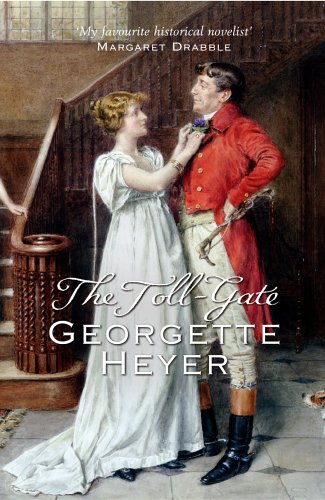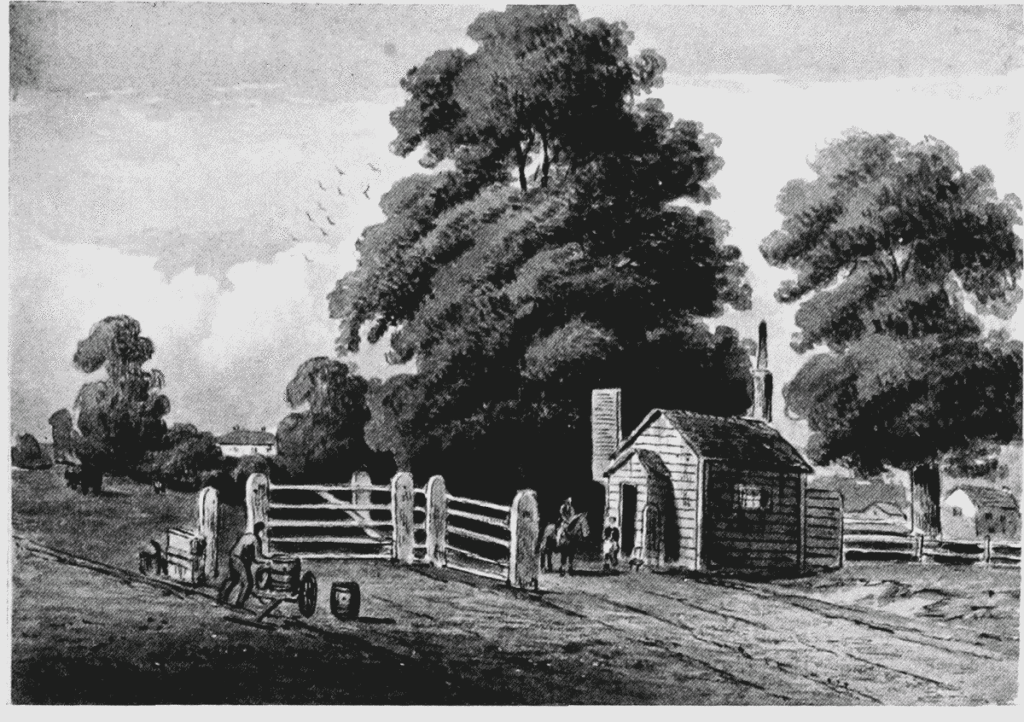Well here we are still in Lockdown, and still in need of comfort reading (well, I am anyway).

Another Georgette Heyer book that I haven’t read for some time is The Toll-Gate. Now why did I ever think that all Heyer’s Regency tales were romances? This one, while containing a charming romance at its heart, is not focussed on the romance, it’s more of a mystery/adventure, and none the worse for that.

Again, unusually for a Heyer book, the story that unfolds mainly concerns the male character, Jack Staple, who, bored with civilian life after an army career, is looking for adventure. We are shown something of his character in this description
‘His manners were easy to a fault, and he very often behaved in a freakish way which seriously shocked his noble relative. His exploits in the Peninsula had made him a by-word amongst his fellow-officers.’
Jack finds his adventure in the Peak District when, passing through a toll-gate, he meets Ben Brean, a terrified young urchin, who has been left in charge of the toll-gate by his father Edward Brean.
As it’s late, Jack decides to stay the night at the toll-house, and learns that Ben’s father has disappeared. Feeling sorry for the lad, Jack decides to discover what has happened, even though the more he learns about Brean Senior, the less he likes the sound of him. It is evident to Jack that Edward Brean has been mixed up in some unlawful business.
The next day, Jack opens the toll-gate to a local lady, Nell Stornaway, and experiences a coup de foudre. Never previously interested in marriage, Jack is totally smitten, knowing instinctively that Nell is the woman for him. Later, when he learns about her circumstances, he is determined to help her.
Nell lives with her impoverished grandfather, Sir Peter Stornaway, the local squire, who is ill and bedridden. Her cousin, Henry Stornaway, the heir to the estate, has turned up like a vulture waiting for his grandfather to die. More worryingly, he has brought a friend with him, the sharp-dressing, unsavoury Nathaniel Coate, who seems intent on making unpleasant overtures to Nell. It is obvious to Jack that both men have another purpose in mind for their visit to the area, one that he determines to discover.
Jack decides to pass himself off as Edward Brean’s long-lost brother, so that he can remain at the toll-house without raising too many suspicions amongst the locals, while he sorts out matters for both young Ben and Nell.
With such havey-cavey goings on, it will be no surprise to learn that more eccentric characters are introduced — not least a Bow Street runner and a highwayman, who both become acquainted with Jack. Introducing characters like these, Heyer is able to employ her knowledge of Regency cant (slang) to good effect. Be warned, some of the dialogue becomes a little impenetrable at times. But never fear, this tale also contains stolen treasure, hidden caves, secret meetings at the dead of night — in fact, everything you could wish for if you enjoy light-hearted adventure stories.
It goes without saying that our hero, Jack, with the help of his new-found friends, solves the mystery, sorts out the villains, and gets the girl. It was not so much the ending (a foregone conclusion) that kept this reader reading, but the marvellously plotted journey that Heyer took me on to reach it.
If you’re looking for a tale that is set, not in the usual Regency locations of ballrooms and drawing rooms, but in rural England, and one that has a decent mystery to solve, I recommend The Toll-Gate.

